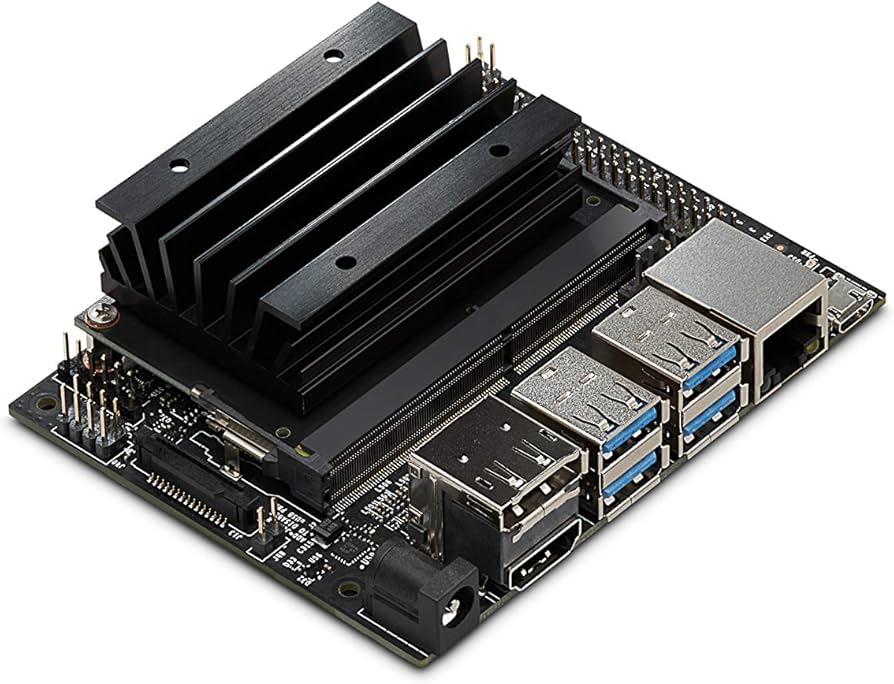Exploring the NVIDIA Jetson Ecosystem: A Comprehensive Overview
Welcome to our deep dive into the world of NVIDIA’s Jetson platform, an increasingly popular solution for AI at the edge. Whether you’re new to embedded AI systems or already familiar with concepts like TOPS (Trillions of Operations Per Second), you’ll find valuable insights about the Jetson ecosystem, its real-world applications, and the challenges you may encounter when using these modules in production.
What Is TOPS and Why It Matters
Before diving into product details, let’s clarify TOPS. It stands for “Trillions of Operations Per Second,” a common measure of AI processing performance. Simply put, it tells you how many operations a chip can handle every second—an important metric when comparing edge AI accelerators like Jetson, HAILO, or Coral. Imagine your AI model doing extensive image recognition tasks: higher TOPS generally means more room for complex operations in real time.
Key Components of the NVIDIA Jetson Ecosystem
An AI solution in the Jetson ecosystem consists of both hardware and software layers:
Hardware Components
-
Jetson Nano
Entry-Level Module
Ideal for basic AI applications on a tight power budget. Known for its ease of use but can show compatibility issues with newer machine learning frameworks on older versions of the OS, as reported in the NVIDIA Developer Forums . -
Jetson TX2
Mid-Range Module
A step-up in performance for applications like real-time object tracking and machine vision. -
Jetson Xavier NX
Compact Module balancing performance and power efficiency. Some users experienced performance slowdowns after upgrading to newer JetPack versions. See this forum thread for details. -
Jetson AGX Xavier
High-Performance Module suitable for complex AI workloads in robotics and advanced machine vision. -
Jetson Orin Series
Latest Generation modules providing advanced AI capabilities with higher TOPS potential. Some hardware reliability reports have surfaced regarding power issues, detailed in the NVIDIA Developer Forums .
Software Components
-
JetPack SDK:
- Jetson Linux: A Linux-based OS optimized for Jetson devices.
- CUDA-X: Parallel computing platform for accelerating AI computations.
- TensorRT: A tool for optimizing deep learning inference.
- DeepStream SDK: Useful for building video analytics applications.
-
Development Tools:
- NVIDIA Nsight: For debugging and performance optimization.
- NVIDIA TAO Toolkit: Streamlines model training and optimization.
Adoption and Real-World Applications
Robotics
Used for tasks like navigation, object recognition, and human-robot interaction. The Jetson Orin modules, for instance, are popular in autonomous mobile robots that demand both high performance and minimal power.
Industrial Automation
Adopted in settings ranging from predictive maintenance to quality control. The Jetson TX2 or Xavier NX is often seen on factory floors for automated inspections.
Smart Cities
In urban infrastructure, Jetson modules power advanced surveillance, traffic optimization, and environmental monitoring. Projects that require real-time edge analysis of video feeds frequently use the DeepStream SDK on Jetson Xavier NX or AGX Xavier.
Healthcare and Retail
- Healthcare: Medical imaging and diagnostics leverage the GPU acceleration for faster AI-driven image processing.
- Retail: For automated checkout, customer analytics, and inventory management using computer vision.
Common Limitations and Challenges
-
Compatibility Issues
Older boards like Jetson Nano sometimes struggle with the latest versions of PyTorch or TensorFlow. See more on the NVIDIA Developer Forums . -
Performance Constraints
Some users noticed GPU performance drops after upgrading to new JetPack releases, especially on Jetson Xavier NX ( forum link ). -
Hardware Reliability
USB port issues on Jetson Nano and power-related failures on Jetson AGX Orin have been documented, for instance in this discussion thread . -
Customer Support Concerns
Some users reported slow or inadequate customer service experiences. Read one user’s story here .
Comparing Jetson, HAILO, and Coral
While HAILO, Coral, and NVIDIA’s Jetson all provide edge AI acceleration, each has its strengths:
- HAILO: Focuses on energy-efficient inference with specialized hardware, boasting strong throughput per watt.
- Coral: Powered by Google Edge TPU, well-integrated with TensorFlow Lite workflows.
- Jetson: Offers a full-fledged GPU architecture (CUDA) for broad AI use cases, plus a large ecosystem of development tools.
When deciding, consider your TOPS requirements, power constraints, and software ecosystem preferences.
FAQ Section
-
Which Jetson module should I start with?
If you’re a beginner or hobbyist, Jetson Nano is a good choice. For more demanding tasks, try the Xavier NX or Orin NX. -
Is Jetson Linux different from other Linux distributions?
Yes, Jetson Linux is tailored to handle GPU acceleration and deep learning workloads, but it still retains much of the structure of Ubuntu/Debian-based distros. -
Do Jetson boards support common AI frameworks (e.g., PyTorch, TensorFlow)?
Yes, though you might need specialized wheels or containers optimized for ARM architecture. Compatibility can vary by JetPack version. -
How do I manage over-the-air updates for Jetson?
NVIDIA doesn’t provide a built-in OTA mechanism, but you can integrate third-party tools or scripts to orchestrate updates on deployed devices. -
What should I do if I face hardware or software issues?
Check the NVIDIA Developer Forums for similar issues, or contact NVIDIA customer support. Keep in mind that some users have reported slow responses.
Resources
- Jetson Ecosystem: A curated list of partners and add-on solutions.
- Jetson Software Page: Contains official SDKs and tools for development.
- Jetson FAQ: NVIDIA’s official answers to frequently asked questions.
3rd Party Support and Integrations
Jetson modules integrate with popular AI and robotics frameworks:
- ROS (Robot Operating System): Tutorials available for Jetson-based robots.
- OpenCV: Hardware-accelerated computer vision tasks.
- Edge ML Platforms: Some IoT device management platforms offer out-of-the-box Jetson support.
Technical Details to Consider
- Interfaces: Jetson modules typically come with PCIe, USB 3.0, MIPI CSI ports for cameras, and Ethernet. Check your chosen module’s specific interface before integrating.
- System Requirements: While the official dev kits include power adapters, specialized deployments require stable power solutions to avoid undervoltage issues.
- Certifications: Depending on your region and application, ensure your final product meets the necessary regulatory certifications (CE, FCC, etc.).
Community and Ongoing Updates
NVIDIA continuously updates JetPack, including security patches and new features. However, major updates may bring unforeseen changes to performance or compatibility, as some threads on the NVIDIA Developer Forums indicate. Engaging in these forums, GitHub repos, and other user communities will help you stay ahead of potential pitfalls.
Conclusion
The NVIDIA Jetson platform is a versatile solution for deploying AI at the edge, combining powerful GPUs with a robust software stack. Whether you’re building autonomous robots, managing city-wide surveillance, or developing advanced industrial automation systems, Jetson offers a wide range of options.
However, be mindful of potential challenges:
- Software compatibility across JetPack versions
- Performance fluctuations with upgrades
- Hardware reliability and power considerations
- Customer support limitations
If you’re curious about which Jetson module best suits your project or how to optimize your existing setup, explore the Jetson Developer Resources and connect with us! For tailored help, consider reaching out our specialists to guide your development journey.
Remember: every AI project is unique, so do your homework on power requirements, software stacks, and required interfaces. By carefully evaluating your constraints and tapping into community knowledge, you’ll be well on your way to building an impactful edge AI application.

